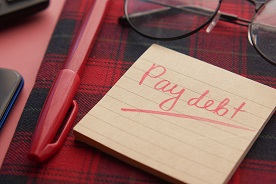Credit card debts are increasing year by year and by the third quarter of 2022, Americans hold $925 billion in credit card debt. More and more people are not able to manage credit card debt. Credit card balances saw a $38 billion increase since the second quarter. As per the latest Quarterly household debt and credit report by the Federal Reserve Bank of New York, there is an increase in credit cards outstanding. This jump of 15% year over year is the highest in the last 20 years.
Numerous studies show that shoppers with credit cards are willing to spend more on items. They check out with bigger baskets and focus on and remember more product benefits rather than costs. But what about when paying electronically or with cash? Credit card debts are some of the most expensive forms of debt. Those advantages of credit cards also help build large debts on the credit cards.
A lot of people in the USA have a credit card debt problem. On average, a consumer has a debt of $5000 on their existing credit cards. We are making Big Banks happy and prosperous by paying hard-earned money in interest charges and penalty fees. Credit Card interest rates are also on the rise and currently at the end of 2022 average interest rates have reached 20.1% as opposed to 18.32% at the start of 2022.
1. Manage credit card debt – Make a budget
The first step in managing and paying off credit card debt is to create a budget. This budget should outline your income, expenses, and savings. This will help you identify how much money you have available to put toward your credit card debt each month.
Always make a realistic budget that you can stick to. Your monthly budget should have some spare which should go for paying off the credit card debt. You do not need fancy tools or subscriptions to make budgets. It’s easy to do it in a journal or diary if you are a bit old school like me. If you have Microsoft Excel, it comes pre-loaded with lots of templates. A first-level easy-to-use template can be accessed from the home screen itself.
2. Prioritize your debts
Once you have a budget, your credit card debts should be the first priority. Start by paying off the credit card with the highest interest rate first, as this will save you the most money in the long run. Credit Cards debts also affect your credit score badly as most of these card debts are unsecured.

Different people work on different stimuli if you have multiple credit card debts. You can look to cut the debt of a credit card first, and then move to the next credit card. This is termed the snowball effect. Reaching the first milestone and moving to the next gives a feeling of fulfillment to the user.
3. Consolidate your debts
If you have more than one credit card debt with a high-interest rate. It is a good idea to consider consolidating your debts into one credit card with a lower interest rate. This can make your monthly payments more manageable and save you money on interest charges.
Another good idea is to refinance this credit card loan to take a Personal or Business Loan from a lender with a manageable interest rate and pay the credit card debts off it. High-Interest credit card rates should always be paid first.
Customers can also look to Balance transfer their credit card debts to a low-interest loan or credit card. Consolidation of debts in a single place can help a user manage the debt effectively.
4. Set up automatic payments
This is a no-brainer if the payments are automatically debited from your account. To avoid late payments and incurring late fees, set up automatic payments for your credit card debts. This will ensure that your payments are made on time each month and help you avoid missed payments.
5. Avoid using your credit cards
While you are working to pay off your credit card debt, avoid using your credit cards for new purchases. This will prevent you from adding to your existing debt and make it easier to pay off your balances. Look to cut down on your credit cards as the next best measure. That shiny credit card in your wallet which gives you access to international lounges may add to your debt woes.
6. Increase your Income:
This is most obvious but if you are in a lot of credit card debt, raising your income level will not hurt. Work towards a plan to increase your income so that you can get rid of debt. Further, this additional income can be in the form of extra shifts at your existing job or selling things you do not need on eBay or Craigslist or even in a garage sale. Make use of any talent you may have. Give a few guitar classes or yoga lessons to others. Social Media and influencer culture have made common folks celebrities. Make use of it to earn some dollars. In the end, use that extra money to pay off your debt.
7. Take outside help from a 3rd party
It is good sometime to take guidance and help from experts. There are financial experts and planners who can help you plan your overall budget and finances. These experts for a small fee can help organize your debts, help sort out what should be your priority, and provide guidance on an easy payment mechanism.
These tips may help you to ease some of your credit card pain.
Finally, there is no silver bullet to vaporize the debt altogether. It depends on how financially prudent a consumer is to get the debt under control. To conclude, one strategy might not be enough for you and may look to adopt multiple strategies to reduce your debt.
